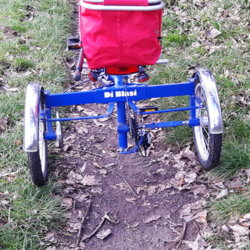Laurentius
Member
- Location
- Coventry
Whilst I am familiar with the usual bicyle wheel set up, the wheels on my trike are new to me, being as they sit on stub axles not between forks, I need a guide to the basic maintenance of these, how they vary from the usual kind, and come apart. I can see they are held on by a recessed nut, which can be removed with a socket, but I am not willing to take one off until I have a better idea of the mechanics.

